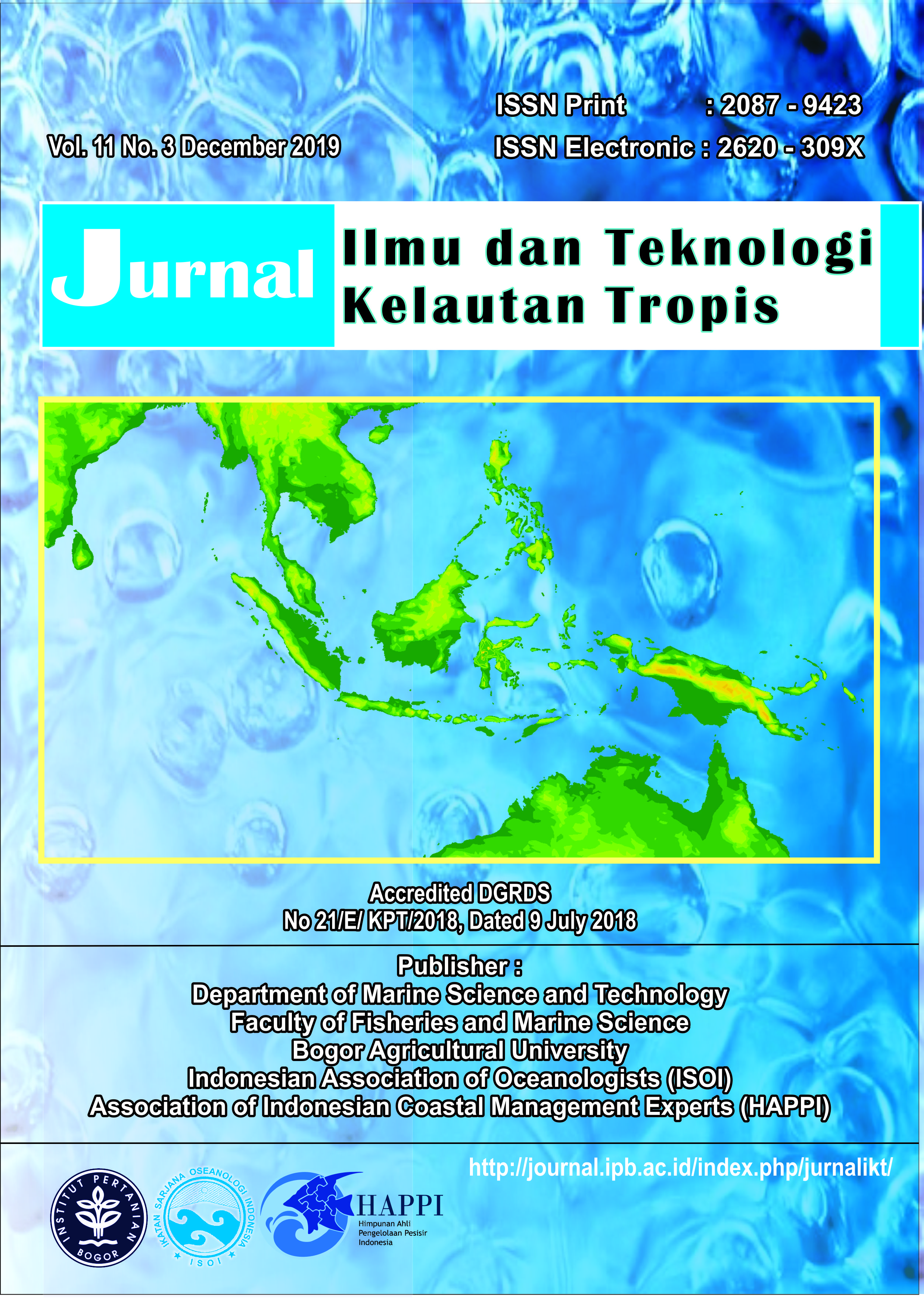WAVEFORM RETRACKING ANALYSES OF ALTIMETRY SATELLITE DATA AROUND GULF, SMALL ISLANDS, AND DEEP WATERS IN HALMAHERA SEA
Abstract
The accuracy of sea surface height (SSH) estimation from altimeter satellites is strongly influenced by waters condition and coastal land. In general, SSH estimations in offshore are accurate. However, in coastal waters, SSH estimation are inaccurate due to the reflection of signal from land. The study purpose was to retrack the waveform of Altimeter satellites in a complex the Halmahera Sea. The data used for this study were the waveform Sensor Geophysical Data Record type D (SGDR-D) of Jason-2 and Jason-3 of 2017. To retrack waveform, we used several algorithms i.e., Offset Centre of Gravity (OCOG), Iced, Threshold, and Improved Threshold. All retrackers provided significant improvement in SSH estimations except OCOG. The best retracker used in Halmahera Sea for the shallow and narrow bay was Threshold 10%, for the deep and wide bay was Threshold 50%, and for small islands waters were Threshold 10% and Threshold 20%. In general, Non-Brown waveforms were more common in the shallow and narrow bay waters (average=63.49%) vs. the deep and wide bay waters (average=11.51%) and small island waters (average=9.57%). However, the improvement percentage of SSH estimations in the shallow and narrow bay waters was higher than the deep and wide bay waters and small islands waters. The best retrackers in the Halmahera Sea was the Threshold 10% algorithm with the IMP value of 96.71% on Jason-2 pass 164.
Authors
This work is licensed under a Creative Commons Attribution 4.0 International License.
Jurnal Ilmu dan Teknologi Kelautan Tropis i is an open-access journal, meaning that all content is freely available without charge to the user or their institution. Users are allowed to read, download, copy, distribute, print, search, or link to the full texts of the articles in this journal without needing to request prior permission from the publisher or the author.
All articles published by Jurnal Ilmu dan Teknologi Kelautan Tropis are licensed under the Creative Commons Attribution 4.0 International License. This allows for unrestricted use, distribution, and reproduction in any medium, provided proper credit is given to the original authors.
Authors submitting manuscripts should understand and agree that the copyright of published manuscripts is retained by the authors. Copyright encompasses the exclusive rights of authors to reproduce, distribute, and sell any part of the journal articles in all forms and media. Reproduction of any part of this journal, its storage in databases, and its transmission by any form or media is allowed without written permission from Jurnal Ilmu dan Teknologi Kelautan Tropis.


